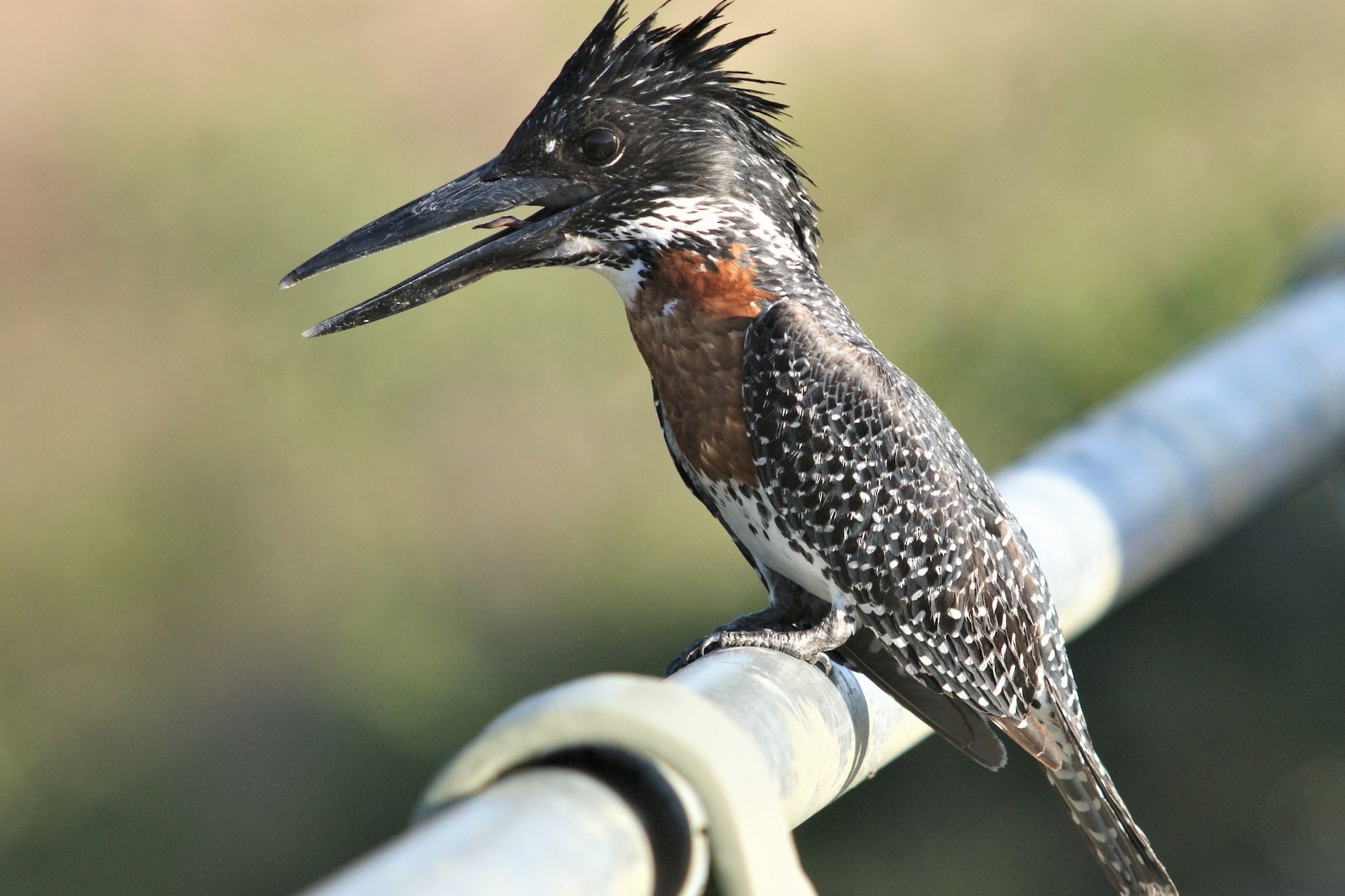The Giant Kingfisher: Uganda’s Majestic Waterbird.
The Giant Kingfisher (Megaceryle maxima). Uganda, often referred to as the “Pearl of Africa,” boasts a rich diversity of wildlife and bird species. Among the country’s impressive avian residents, the Giant Kingfisher (Megaceryle maxima) stands out as a majestic and awe-inspiring waterbird.
Appearance and Identification:
The Giant Kingfisher, as the name suggests, is indeed a giant among kingfishers, with a length of around 42 to 46 centimeters. Its striking plumage features a predominantly white belly and chest, a slate-blue head, and an impressive black, dagger-like beak that characterizes the kingfisher family. Its wings are also a beautiful blue-gray, and its tail is short and square. The male and female Giant Kingfishers are quite similar in appearance, but the female may have a chestnut-brown band across the chest.
Habitat and Distribution:
These regal birds are primarily found near freshwater bodies, including rivers, lakes, swamps, and even ponds. In Uganda, Giant Kingfishers can be spotted throughout the country, with notable populations residing near the banks of the Nile River and Lake Victoria; Their preferred habitats often include forested areas close to water, as they rely on trees and overhanging branches for perching and nesting. Prominent destinations in Uganda include Mabamba Swamp, Murchison Falls NP, Kibale Forest and Budongo Forest.
Diet and Feeding Behavior:
Giant Kingfishers are masterful fishers, employing keen eyesight to spot their prey beneath the water’s surface. Their diet consists mainly of fish, but they are known to consume a variety of aquatic creatures such as crabs, insects, and small amphibians. They hunt by perching on a branch or a rock overlooking the water, waiting patiently for a chance to strike. When they spot a potential meal, they dive with remarkable speed, plunging into the water to capture their prey. Their powerful beaks help them secure and carry their catch back to a convenient perch for consumption.
Breeding and Nesting – The Giant Kingfisher (Megaceryle maxima)
Giant Kingfishers typically build their nests in burrows excavated into riverbanks or steep embankments. The female usually lays a clutch of 2 to 4 white eggs, which both the male and female take turns incubating. This cooperative effort ensures the safety and well-being of their offspring. After hatching, the young birds are cared for by both parents until they fledge and become independent.
Conservation Status and Significance – The Giant Kingfisher (Megaceryle maxima)
Giant Kingfishers are classified as a species of “Least Concern” by the International Union for Conservation of Nature (IUCN). However, like many wildlife species, they face threats from habitat degradation, pollution, and disturbance due to human activities. It is essential to protect their natural habitats to ensure the survival of these magnificent birds in Uganda.
In Uganda, Giant Kingfishers play a vital role in the ecosystem by helping to control aquatic populations and contributing to the overall biodiversity of the region. They also add to the country’s allure as a prime birdwatching destination for enthusiasts from around the world.
Remarks – The Giant Kingfisher (Megaceryle maxima)
In Conclusion; The Giant Kingfisher, with its majestic appearance and remarkable hunting skills, is a significant contributor to Uganda’s avian biodiversity; As an iconic waterbird found in various parts of the country, it offers a unique opportunity for birdwatchers and nature enthusiasts to appreciate the wonders of Uganda’s rich natural heritage; Protecting their habitats and raising awareness about these magnificent birds is crucial to ensure their continued presence in the “Pearl of Africa.”








